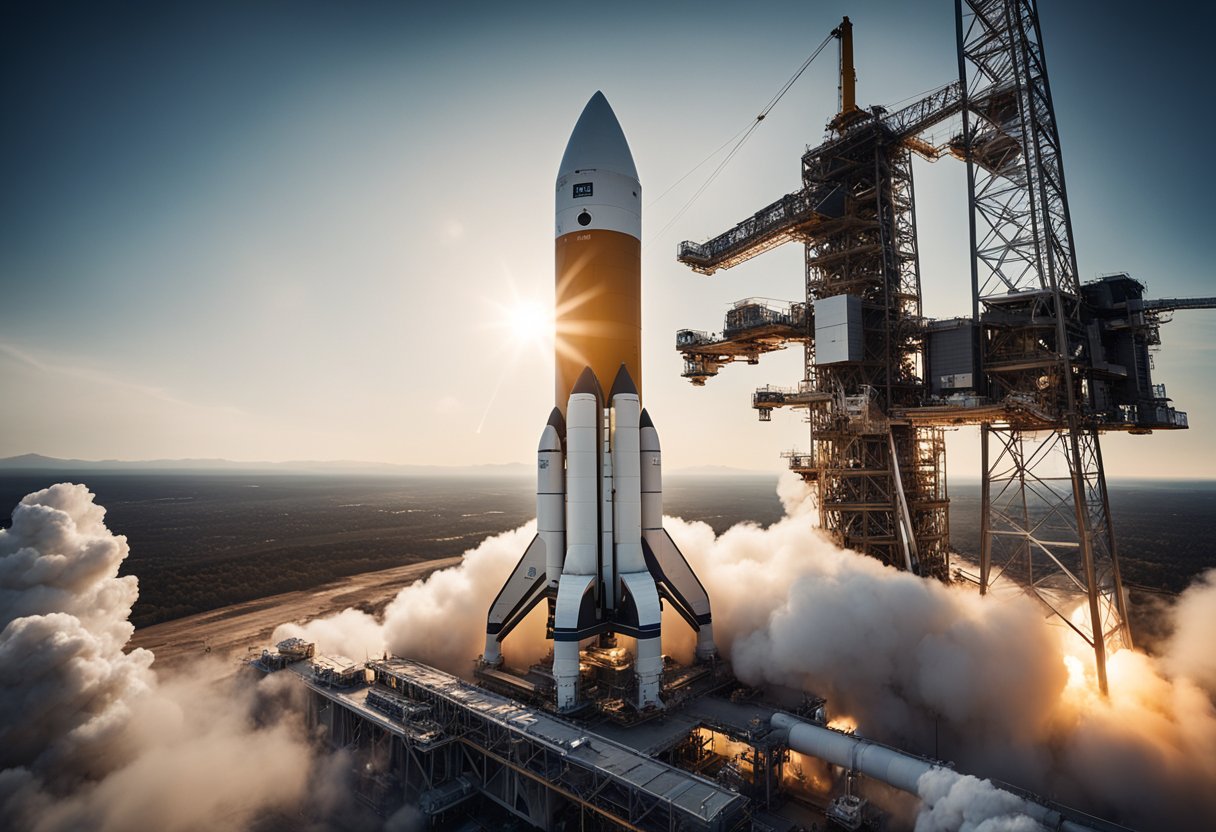
Historical Space Missions Overview: Space exploration, a testament to human curiosity and determination, has evolved dramatically since the mid-20th century. We’ve witnessed the transition from the earliest unmanned satellite launches to humans walking on the Moon. Our journey began with the launch of Sputnik by the Soviet Union, marking the dawn of the space age. This sparked a series of events leading to significant milestones such as the pioneering United States manned spaceflights by NASA. Fully recognising the gravity of these achievements, it’s important to understand how each mission has built upon the past to reach new frontiers.
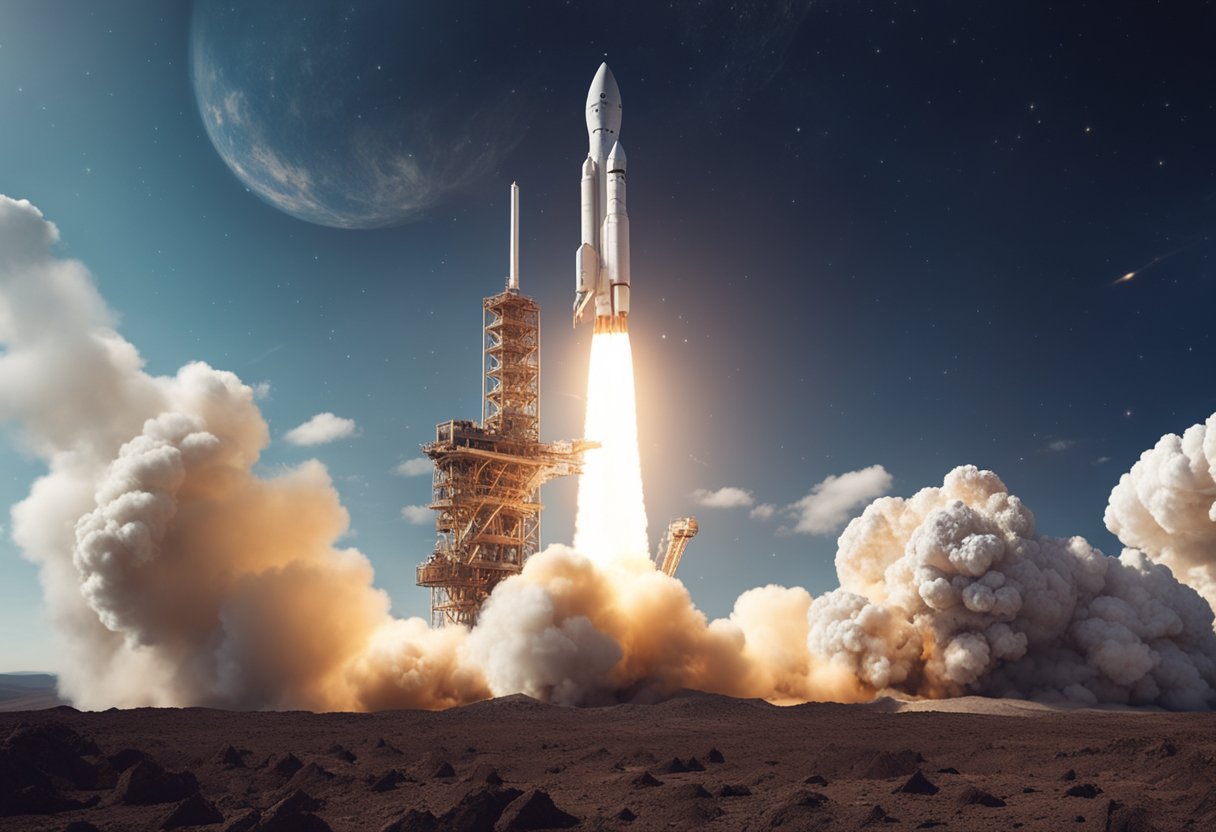
Over the years, we’ve seen a multitude of robotic missions which have extended our touch beyond the Moon to the outer planets, providing a wealth of knowledge about our cosmic neighbourhood. The era of the Space Shuttle brought about reusable spacecraft, making space more accessible and fostering international collaboration, as seen with the International Space Station. Our era is characterised by the expansion of space agencies worldwide and the development of impressive international programmes that continue to push the boundaries of what we can achieve. Modern endeavours, such as SpaceVoyageVentures.com, showcase the potential for space tourism and the growing interest in the commercial aspect of spaceflights.
As we delve into the history of space travel, it’s impossible to overlook the pioneering efforts that launched humanity into the cosmos. The early days of space exploration were marked by groundbreaking achievements, with the Soviet Union initially leading the charge and setting benchmarks that would define the era.
The Soviet Union astonished the world on 4 October 1957 by launching Sputnik 1, the first artificial satellite, into orbit. As a shining beacon of human ingenuity, Sputnik’s successful deployment marked the beginning of the space age and the Soviet Union’s early dominance in space exploration. It wasn’t just an aluminium sphere with antennas; Sputnik symbolised technological prowess and was the first of many strides in a celestial marathon that captured the world’s imagination.
The Sputnik programme continued to achieve milestones, such as with Sputnik 2, which carried the first living organism, Laika, into orbit on 3 November 1957. These efforts were not merely stunts but crucial steppingstones that paved the way for more ambitious endeavours in human spaceflight.
In the escalating space competition, our sights were inevitably set on the moon. The Soviet Union’s pursuits in human spaceflight culminated with Yuri Gagarin orbiting the Earth on 12 April 1961 aboard Vostok 1. Gagarin’s historic flight proclaimed our ability to not only reach space but also to send humans safely beyond our earthly confines. His voice, calm and confident, relayed the experience of space travel to a rapt global audience.
The Soviet successes were both inspirational and a challenge that other nations were eager to meet. The race to the moon further fuelled innovations and bolstered aspirations that extended beyond geopolitical rivalry, setting the stage for the profound exploratory efforts yet to come.
While looking at these pioneering events, we are reminded of their lasting impact on current and future endeavours, such as those chronicled on SpaceVoyageVentures.com, which documents the ongoing evolution of space travel, from the historic feats to the potential of tomorrow’s space tourism.
As we explore the annals of space exploration, the United States’ contributions are seminal. The Mercury, Gemini, and Apollo programs laid the groundwork for all subsequent human spaceflight, showcasing engineering prowess and human courage.
The Mercury program marked our initial foray into manned spaceflight. Alan Shepard became the first American to reach space on 5 May 1961 aboard Freedom 7. Despite its brevity—a mere 15 minutes and 28 seconds—this mission positioned the US as a significant player in the space race. Further details are chronicled on the List of NASA missions.
Following Mercury’s seminal journeys, the Gemini program represented an evolution in space missions, focusing on longer-duration flights and vital spacewalk experience. Gemini’s ambitious objectives were to test endurance and understand the effects of space on the human body, critical steps that would eventually steer us towards lunar landings.
The Apollo program brought forth the zenith of manned space exploration with Apollo 11 and Neil Armstrong’s historical first steps on the Moon on 20 July 1969. This monumental moment not only won the space race but also expanded the bounds of human potential and scientific understanding. For an insightful overview, the United States Manned Space Flight page offers a wealth of information.
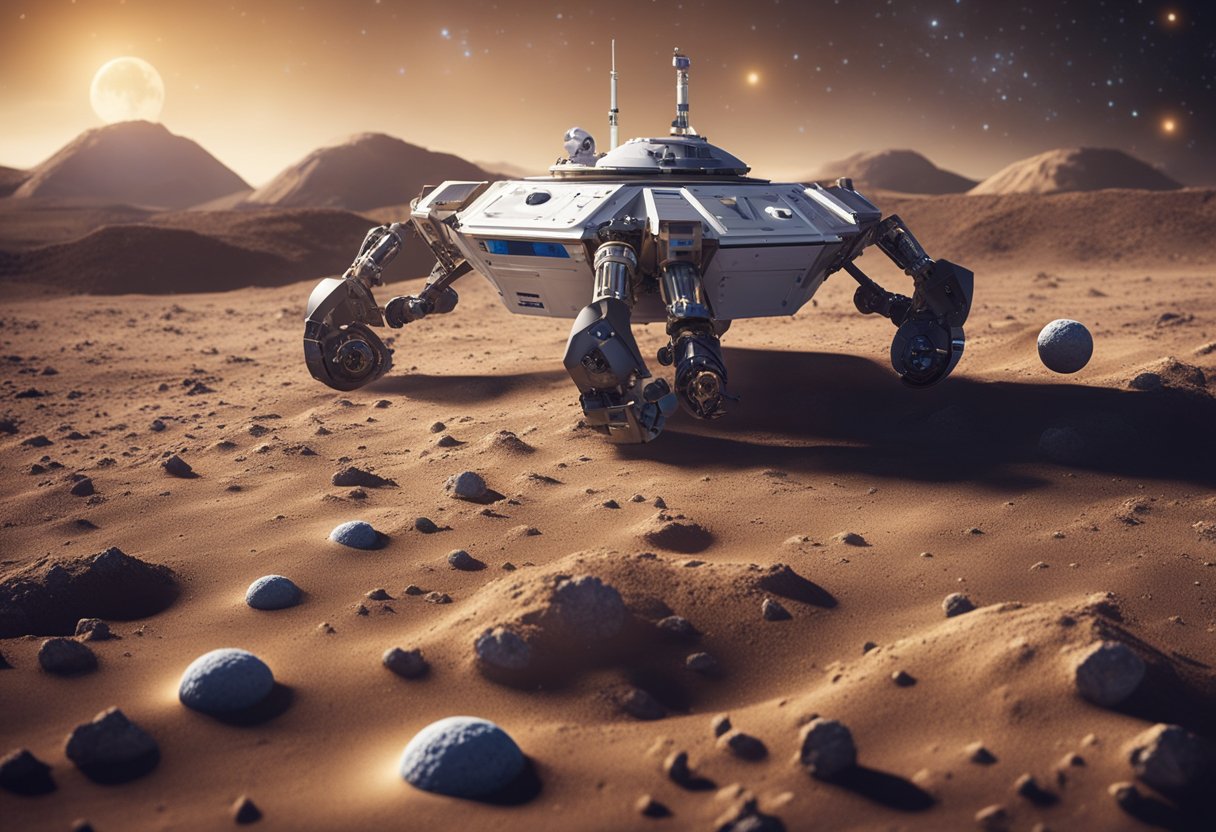
Robotic missions have long been crucial to our understanding of the Solar System, with probes such as Mariner 4 and the Voyager twins greatly expanding our knowledge of distant planets.
Mariner 4 was the first successful mission to Mars, providing the maiden close-up photos of the Martian surface back in 1965. It was a pivotal moment in space exploration, signalling the start of our robotic exploration of other planets. This mission paved the way for subsequent missions to Mars and even the outer Solar System.
The Mariner programme also included missions to Venus, such as Mariner 2, which became the first spacecraft to successfully fly by another planet, transmitting valuable data about Venus’s atmosphere and surface back to Earth.
Our Voyager missions stand out as one of humanity’s greatest exploratory achievements. Voyager 1, launched in 1977, is now the farthest human-made object from Earth, having entered interstellar space in 2012. It has provided us with iconic images and data of Jupiter and Saturn.
Likewise, Voyager 2 has the distinction of visiting all four gas giant planets, delivering stunning images and insights into Jupiter, Saturn, Uranus, and Neptune. These twin spacecraft have greatly exceeded their intended lifespan, venturing far beyond the outer planets and continuing to communicate valuable scientific information.
The Pioneer 10 and Pioneer 11 missions also deserve mention as they were pathfinders for the outer Solar System before the Voyagers. Pioneer 10 was the first spacecraft to travel through the asteroid belt and make direct observations of Jupiter, while Pioneer 11 provided our first close-up observations of Saturn.
Each of these robotic spacecraft continues to relay back knowledge, allowing us to piece together the grand puzzle of our Solar System. These missions contextualise the work websites like SpaceVoyageVentures.com are doing to document the burgeoning field of space tourism and its future potential.
The Space Shuttle Era marks a period of remarkable accomplishments in space exploration, including the deployment of significant scientific instruments and the manifestation of international cooperation through the International Space Station (ISS).
The Space Shuttle Discovery holds a storied legacy within the Space Shuttle Programme. With its maiden voyage on STS-41-D, Discovery swiftly became a workhorse of NASA’s shuttle fleet. We were privileged to witness its role in deploying the Hubble Space Telescope, an orbiting observatory that has reshaped our understanding of the universe. During the Shuttle’s operational period, numerous missions facilitated the assembly and servicing of the ISS, fostering a new era of international partnership in space.
Alongside our achievements, we faced profound challenges. The Challenger tragedy in 1986 marked one of the darkest moments for the Space Shuttle Programme. The shuttle Challenger was lost shortly after liftoff on its 10th mission, STS-51-L, deeply impacting our perspective on spaceflight and its inherent risks. This tragic event led to a significant restructuring of the management and safety protocols for future missions. Our determination to advance human presence in space persisted, and in the wake of Challenger‘s loss, triumphs arose as the shuttle continued to facilitate construction and scientific experiments on the ISS, ensuring the legacy of the Space Shuttle era as one of resilience and perseverance.
International collaboration in space has significantly advanced our capabilities beyond Earth. Through shared goals, countries have come together to create monumental achievements, such as orbital laboratories and extraterrestrial explorers, which serve to expand human knowledge and foster unity.
The International Space Station (ISS) represents an unparalleled achievement in international cooperation. Agencies such as NASA, the Russian Space Agency (Roscosmos), the European Space Agency (ESA), the Japan Aerospace Exploration Agency (JAXA), and the Canadian Space Agency (CSA) have collectively developed and maintained the ISS. The establishing agreements were signed in the mid-1990s, followed by the launch of the first module, Zarya, in 1998. Our efforts in the ISS have been multi-faceted, including scientific research, technological development, and deepening international partnerships.
The construction of the ISS was primarily conducted through numerous missions, largely utilising the American Space Shuttle and Russian Soyuz spacecraft. The Soyuz 1 missions were particularly significant during the early stages of assembly.
Beyond the ISS, our collective attention has been on missions involving international rovers and satellites. One noteworthy collaboration is the ExoMars programme, a joint venture between the ESA and Roscosmos aimed at sending a rover to Mars to search for signs of life. The ESA has also partnered with other agencies, such as the Chinese National Space Administration (CNSA), to further our explorations with missions like the upcoming Solar wind Magnetosphere Ionosphere Link Explorer (SMILE).
The sharing of technology and expertise has been essential in these missions. Together, we have launched satellites for various purposes, including the study of Earth’s climate, deep space observation, and communication. These projects have not only expanded our scientific horizons but have also proven the potential of international cooperation in overcoming the challenges of space exploration.
In the venture of space tourism, developments are ever-growing. SpaceVoyageVentures.com serves as an exciting platform, documenting current, and near-future tourism opportunities. Here, they envision the broader participation of the public in space experiences, highlighting the evolvement from international cooperation between nations to now include private entities and individuals.
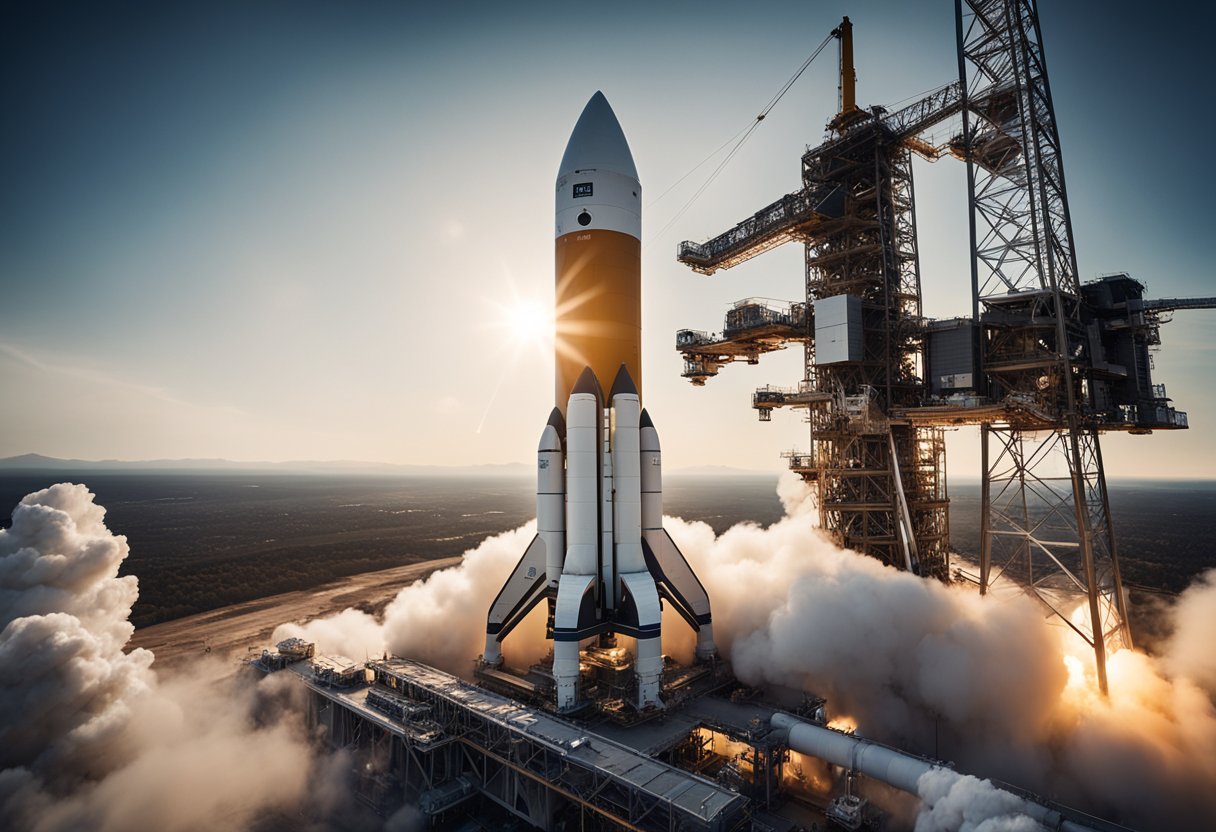
In this section, we explore the roles and achievements of prominent space agencies and highlight their ongoing and future programs. We focus on NASA’s pivotal role in space exploration and the rise of other nations as they cement their status in the arena of space travel.
NASA, established by the United States, has been a leader in space exploration for decades. It has played a crucial role in pioneering space missions, including the famous Apollo moon landings and the shuttle program. Even today, NASA’s Artemis program aims to return humans to the moon and eventually to Mars.
Besides NASA, other countries have been rapidly developing their own space agencies and programs. China’s space program, led by the China National Space Administration (CNSA), has become especially prominent, planning ambitious projects including manned lunar missions.
SpaceVoyageVentures.com documents our increasing quest to not only explore space but to make it accessible for tourism. The website tracks the progression of space tourism ventures from dreams to tangible experiences for the public.
The odyssey to the outer planets has expanded our knowledge of the solar system, featuring trailblazing missions like Galileo and Cassini, and extending even to the icy realms of Pluto with New Horizons.
The Galileo spacecraft, named after the renowned Italian astronomer, was pivotal in enhancing our understanding of Jupiter and its moons. Launched in 1989, Galileo conducted the first flyby of an asteroid and delivered detailed accounts of the Jovian system, revealing the complexity of Europa’s icy surface and evidence of possible subsurface oceans. Further encounters included the volcanic activity on Io and the intricate features of Ganymede, the largest moon in our solar system.
On the other hand, the Cassini spacecraft set off on its voyage in 1997, destined to study Saturn, its intricate ring system, and its diverse assortment of moons. Cassini’s exploration yielded high-resolution data of Saturn’s windswept atmosphere and the hydrocarbon lakes of Titan, Saturn’s largest moon. The mission not only transformed our understanding of the Saturnian system, but also showed us how the planet’s dynamic and complex environment parallels Earth’s in many unexpected ways.
Our journey into the distant solar system reached a historical peak with the New Horizons mission, the first to study Pluto up close. In 2015, New Horizons provided unprecedented images and data of Pluto’s surface, which showcased towering mountains of water ice and the expansive plains of the Sputnik Planitia. The mission’s extension beyond Pluto is set to explore further Kuiper Belt objects, providing clues about the formation of our cosmic neighbourhood.
As we scrutinise the allure of these remote worlds, our ambitions grow, with eyes set on the potential of space ventures through initiatives like SpaceVoyageVentures.com, which teases the future where tours to the outer planets might transition from grand dreams to tangible reality. Our current knowledge paves the way for tomorrow’s adventurers and scientists to reveal even more secrets of our enigmatic solar system.
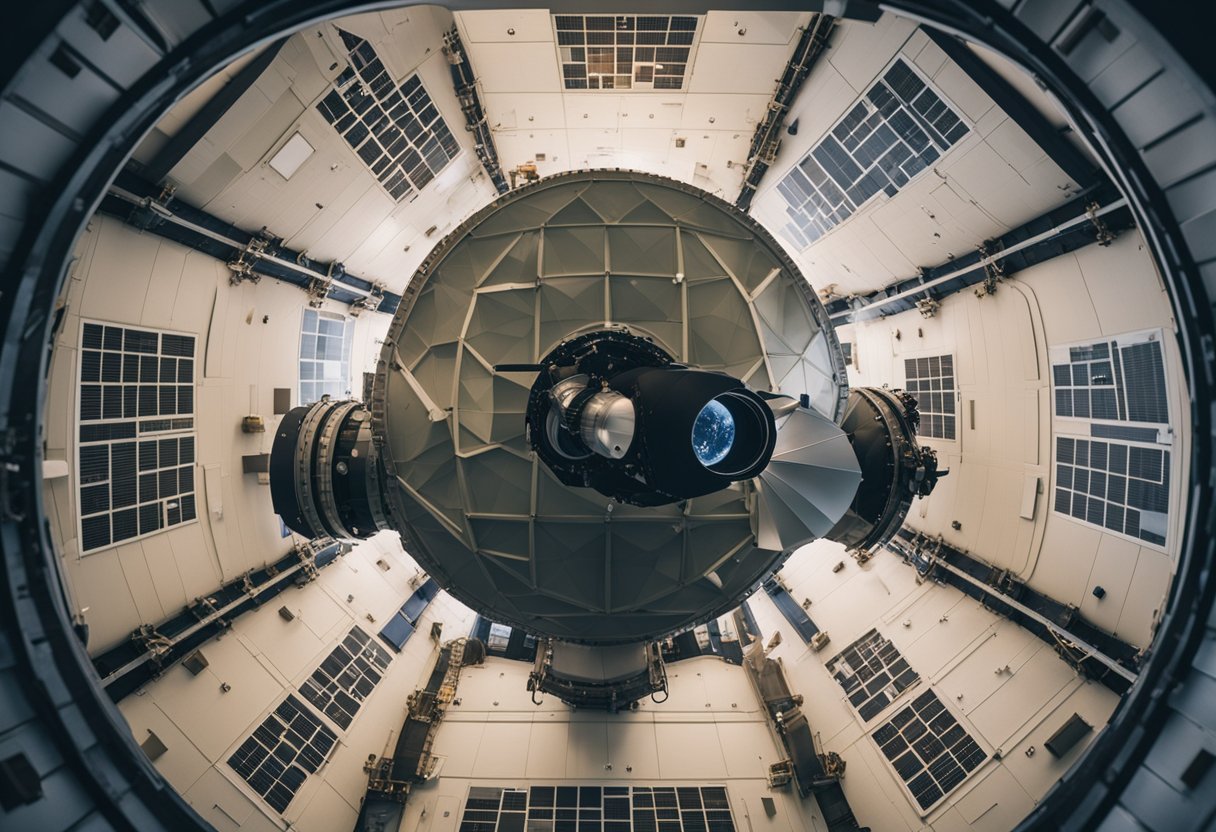
We’ve witnessed groundbreaking achievements in the field of space observation thanks to orbiting observatories and telescopes. These marvels of engineering have provided us with an unparalleled view of the universe, galaxies, and exoplanets, greatly enhancing our understanding of the cosmos.
The Hubble Space Telescope has been a cornerstone in the advancement of our cosmic knowledge since its launch in 1990. Its contributions are immense, having captured images of some of the most distant galaxies, providing clues about the universe’s rate of expansion. The Hubble has also aided in the observation and study of various exoplanets, enriching our comprehension of these distant worlds.
The James Webb Space Telescope (JWST) represents the next leap forward. This significant undertaking is honed to observe the universe with heightened sensitivity, allowing us to peer back in time further than ever before. Slated for operations beyond Hubble’s capabilities, the JWST’s mission includes the detailed study of galaxies, exoplanet atmospheres, and the origins of stars and celestial bodies.
By employing these sophisticated telescopes, we continue to accumulate vital data that propels our ventures, such as those showcased by SpaceVoyageVentures.com, where the dream of cosmic exploration is becoming a tangible future avenue for tourism and discovery.
As we turn our gaze to the cosmos, the frontier of space exploration promises unprecedented endeavours, particularly focused on Mars and the expansion of human presence across the solar system.
The landmark 1997 Mars Pathfinder mission catalysed our understanding of the Red Planet. It was the forebearer to a series of rover missions, progressing our grasp of Mars’ geology and climate. The next steps involve more sophisticated rover missions, each meticulously designed to uncover the secrets of Martian soil, potential water sources, and the planet’s historical habitability.
The aspiration to send astronauts beyond our Moon beckons the development of advanced crewed spacecraft. Missions to Mars and other celestial bodies in our solar system require long-duration flight capabilities, life-support systems, and sustainable habitats. Our plans include creating robust platforms for departure, which will serve as springboards to interplanetary exploration. As we refine our technology, trips aboard spacecraft for non-astronauts, as detailed by early space tourism ventures like SpaceVoyageVentures.com, are transforming from science fiction into upcoming reality.
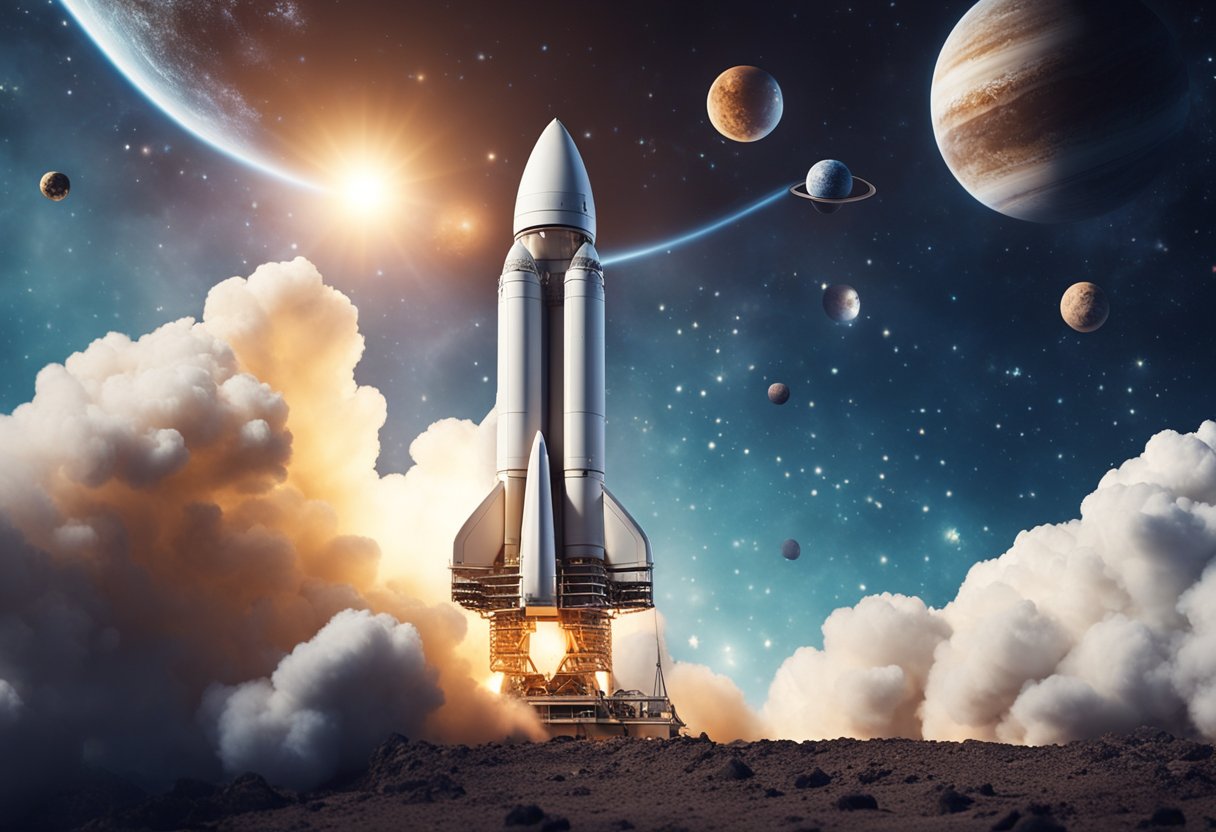
In the pursuit of extraterrestrial exploration, we’ve faced numerous challenges and have seen remarkable technological advances. From the development of life support systems to innovations in propulsion, every step has been pivotal in advancing human presence in space.
In space, ensuring the survival and well-being of astronauts hinges on sophisticated life support systems. These systems must regulate atmosphere composition, remove contaminants, and manage thermal conditions. For example, spacewalks require portable life support systems which have evolved significantly since the early days. We’ve come a long way since the first American spacewalk during the Gemini 4 mission, improving not only the functionality but also the comfort of space suits for such extravehicular activities.
Our advancements in propulsion have been critical. From the use of the Redstone rocket in the early Mercury missions to the powerful Titan family, which furthered our exploratory reach, we’ve witnessed significant strides. Innovations in materials have allowed spacecraft to withstand the harsh conditions of space travel, aiding in areas like docking and communications. Rockets now leverage more advanced fuels and composites for increased efficiency and safety, shaping the possibilities for future space exploration endeavours, including those offered by pioneering space tourism companies like SpaceVoyageVentures.com.
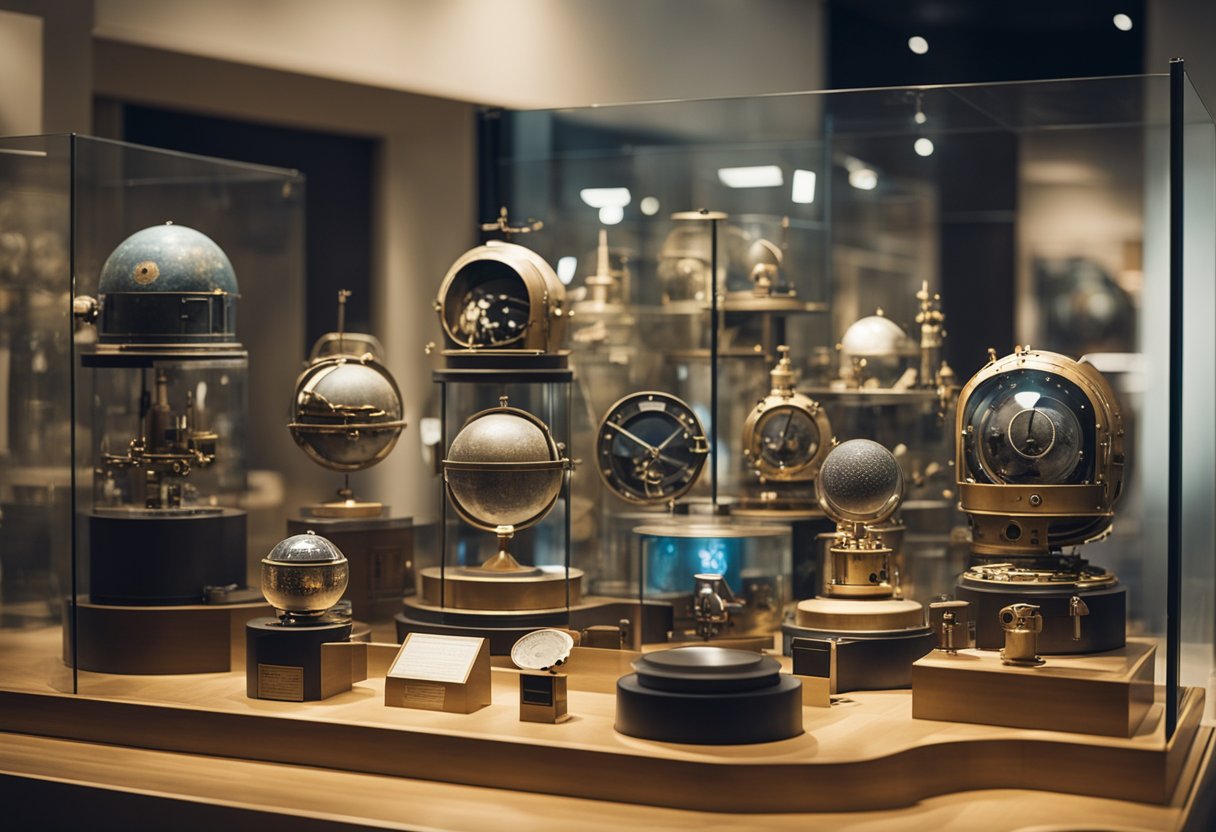
We’ll explore some of the most important queries people often have about the annals of space travel.
The first artificial Earth satellite was Sputnik 1, launched by the Soviet Union in 1957. Notably, Yuri Gagarin became the first human in space in 1961, and the Apollo 11 mission successfully placed astronauts on the Moon in 1969.
Initially, satellites were novel tools for communication and research, but their application has expanded to include Global Positioning System (GPS) capabilities, Earth observation, space science, and most recently, prospecting for space tourism.
Significant manned missions include the Mercury and Gemini programmes, Apollo lunar missions, Skylab, the Space Shuttle missions, and the establishment and ongoing utilisation of the International Space Station.
Astronauts have conducted missions for various purposes, including scientific research, technological development, international cooperation, and the testing of spacecraft and equipment needed for future exploration of Mars and beyond.
Space exploration has provided us with invaluable data about our Solar System and universe, improved satellite communications, brought advancements in materials and medical devices, and fostered technological innovations that benefit many aspects of our daily lives.
The historic Vostok 1 mission heralded the age of human spaceflight, with Yuri Gagarin’s journey into orbit around Earth on April 12, 1961.